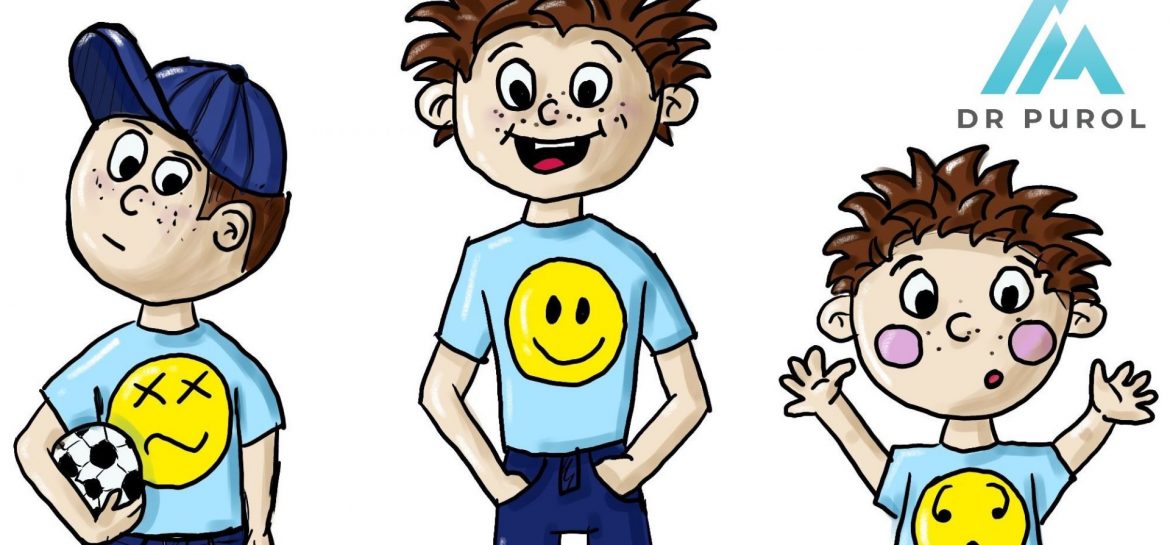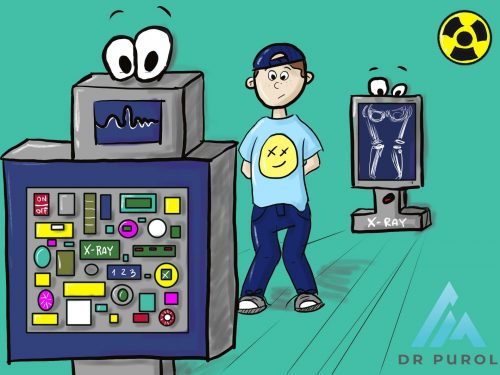
My child has crooked legs. A few words about axis disorders.
What is genu varum also called bow- legs?
We speak of genu varum when in a child standing at attention (like a soldier on guard) with feet joined together, we see a significant distance between the knees. Varus deformity of the knee can occur from birth and most often self-corrects during the first two years of life. Bow legs appearing in adolescence more often require surgical intervention.
What is genu valgum also called knocked-knee ?
We talk about genu valgum when we see a significant distance between the ankles (feet) in a child standing at attention with their knees together – the popular “X-es”. Valgus deformity of the knees often occurs between the ages of 2 and 4 and also has a tendency to self-limit over time.
What can I do to make my child have straight legs?
In the case of axis disorders in children, observation and regular control is enough to catch a possible moment beyond the normal limits.
I often suggest parents to take a picture of their children’s lower limbs in the “attention” position against the background of the wall once every 3 months. The photo should be taken in comparable conditions, preferably from the height of the child’s pelvis, away from him enough to include the entire legs. When comparing such photos, we can notice the tendency to correct the axis disturbance or, unfortunately, the progression of deformation. Such home documentation makes it easier for orthopedists to make therapeutic decisions.
It is very important to take care of your child’s weight. Children who are overweight and obese have a higher risk of developing axis disorders.
What if my baby’s legs are still crooked?
Minor deformities do not require treatment as they do not adversely affect the “aging” of the knee joints and their earlier degeneration. If the deformity begins to worsen, the doctor should order a special X-ray of the lower limbs on a long film.
Why are we doing such an x-ray? Is it safe?
Current X-ray machines do not emit large doses of radiation and photos taken periodically do not cause negative side effects. X-ray allows to objectively assess the disturbances of the axis of the knee joint. The doctor calculates the appropriate angles, ren orthopedist
plots the axes of individual bones and compares them with the standards. If these values differ greatly, minimally invasive correction procedures can be performed.
What does minimally invasive correction procedures mean? It sounds terrible after all …
It is an operative treatment. Axis disorders arise at the bone level – they cannot be trained or rehabilitated. Sometimes this is the only way to get your child “straight legs”. The treatment uses the process of bone growth, which is why regular medical visits are so important to perform it in a timely manner, if necessary. This method works by temporarily blocking the bone growth cartilage. From a small incision, under anesthesia, of course, a special plate is attached, fixed with two screws on both sides of the cartilage. The plate has a plastic effect on the growing bone, allowing the leg to be gradually straightened. After obtaining the correct axis, the plate should be removed and the legs continue to grow properly.
How long will my child have this plate? Does it bother the child in any way?
We keep the plate until the expected correction is obtained. The time depends on the degree of deformity and the child’s growth jump. The plate does not interfere with anything, it is located subcutaneously and is invisible. The child can participate normally in sports and activities with friends.
Author: Maciej



